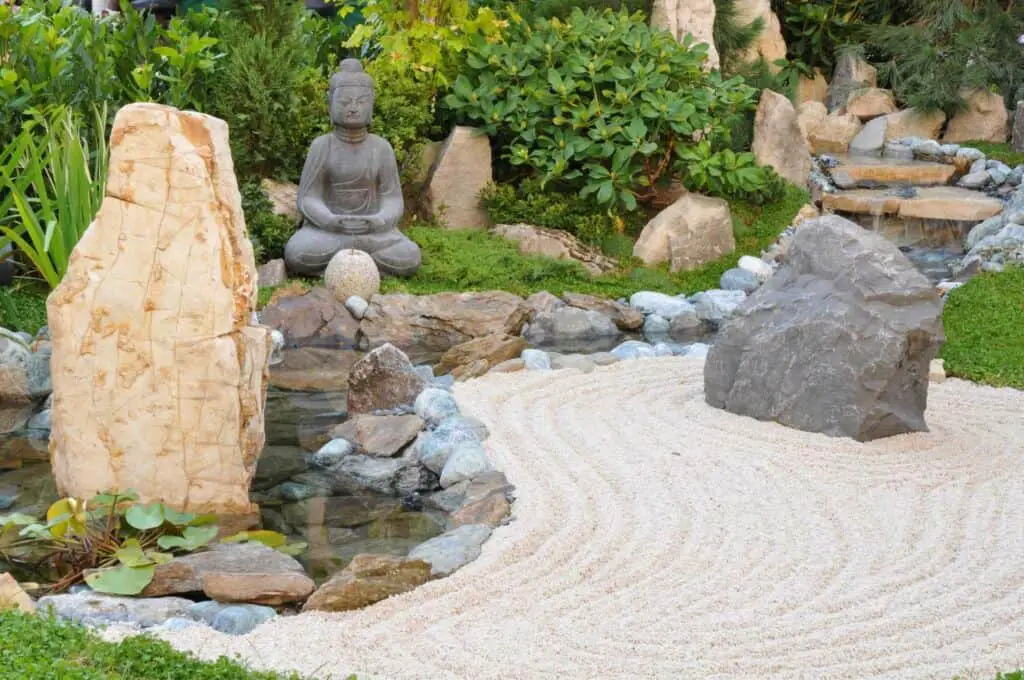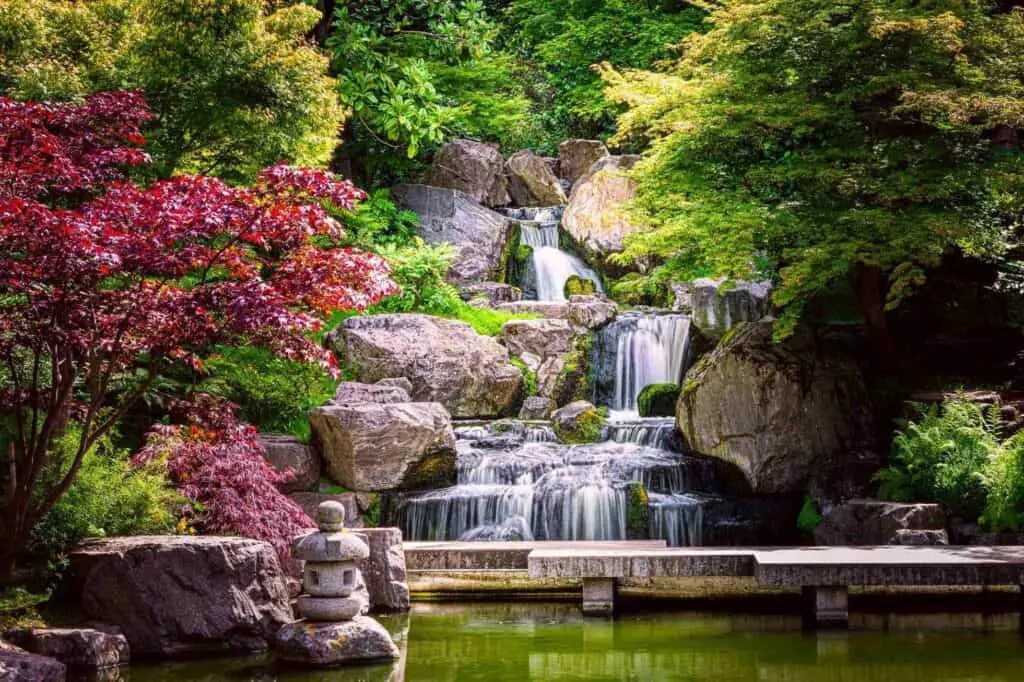A Japanese garden doesn’t require many elements if they create an ideal environment. Since they’re guided by Zen and Shinto principles, their purpose is to evoke a meditative state and nature-appreciating mood.
So, what are the 3 essential elements of a Japanese garden? The three essential elements of a Japanese garden are stone, plants, and water. You can add lanterns, smaller rocks, water features, and even a bridge, but more importantly, you can remove any unwanted elements and create a garden according to your taste.


Learning about the three essential Japanese garden elements also represents understanding their meaning. Here, you’ll understand why some are used and how they’re placed.
What Are the 3 Essential Elements Of A Japanese Garden?
Stone, water, and plants are versatile materials that can be woven into the garden in various ways. The entire layout needs to inspire a sense of calmness since Zen philosophy emphasizes meditation and actions and thoughts that help reach a meditative state.
When you enter your Japanese garden, the area must entirely feel like a unit; there isn’t one particular feature or location you have to reach. Instead, you should learn how to enjoy it all.
Rocks And Stone Create A Path And Represent Mountains
The shape and size of the rocks and stones used in Japanese gardens are secondary to their purpose. The main thing is to arrange them to seem like they’ve been there for a while. You can use larger rocks as singular features or get small ones to create clusters.
If your garden must have a centerpiece, it would usually be a rock of an unusual or prominent shape. The most commonly used stones are granite, limestone, and slate.
The sand that surrounds the stone path is crucial to its placement. You can use the sand to bury the stones for the path deeper into the ground and prevent it from moving around.
Looking to build your own Japanese garden? Here is a guide to the essential Japanese Garden tools
Water Represents the Flow of Life and Serenity of the Ocean
Water is an optional but very desirable feature in a Japanese garden. The environment comes to life more when water is there, especially when it attracts wildlife and provides moisture for the plants surrounding it.
Water provides space for reflection and expands the garden visually. However, sometimes a water area is impossible to create. If so, you can arrange rocks in such a way that makes it seem like there’s water there. Even a suggestion of it will be enough to create a meditative area.

Plants Present Surprises to Be Discovered In a Japanese Garden
Evergreen plants are commonly used so the garden can look and feel inspiring year-round. They are also a backdrop for other natural elements, like stone and sand.
Trees are fantastic additions to the japanese garden area, especially those with distinct, intense colors in different seasons. The most common trees used in Japanese gardens are bamboo, pines, cherry, plum, and magnolia trees.
Bamboo is a hallmark of the Japanese garden. Bamboo makes sounds and moves when the wind blows, giving the environment a dash of life. The other trees are used because of their marvelous-looking foliage and flowers at different times of the year.
You Can Add Ornaments and Expand the Garden to Your Liking
If you need a place to sit and soak in the energy of your Japanese garden, you can add a pergola. Put a stone lantern somewhere unnoticeable if you wish to enjoy your garden both during the day and night. The ornaments can help the garden feel complete.
Recreating the perfect Japanese garden is a fun way to improve your backyard and bring calm to your environment. The more time you spend in it, you will notice its benefits and stay longer every time.